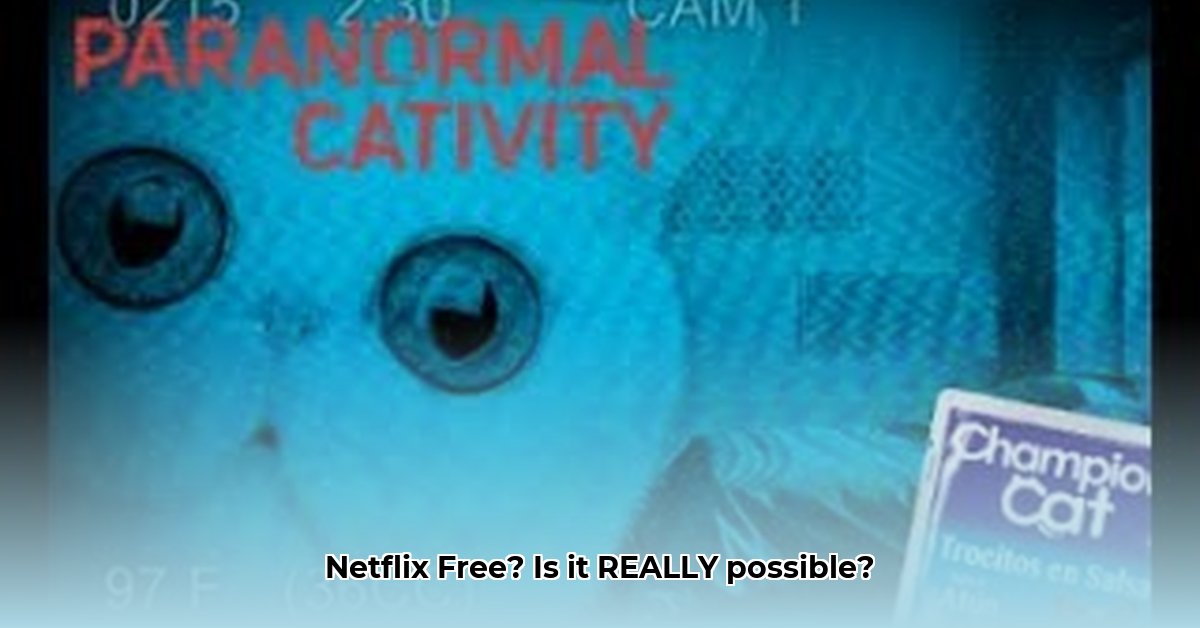
Forget pricey subscriptions; the streaming landscape is embracing free, ad-supported options, and Netflix is wading into the fray with its own free tier, often dubbed "Catflix SU" online. This bold move, however, is a high-stakes gamble in a fiercely competitive market. This article analyzes whether Netflix's free tier can truly compete and ultimately prove a winning strategy. We'll dissect the offering, compare it to competitors, and assess its potential for long-term success.
Netflix's Free Tier: A Closer Look
Netflix's free tier offers a curated selection of movies and TV shows, but with a crucial caveat: advertising. Think of it as a meticulously crafted sample pack—designed to entice users into upgrading to the premium experience. The limited content library and ad interruptions are deliberate limitations. The true goal? To attract new users and convert them into paying subscribers. But can this strategy withstand the scrutiny of a crowded marketplace?
Facing Down the Competition: A Streaming Free-For-All
The free, ad-supported streaming space is a crowded battlefield. Netflix faces formidable competitors, each with distinct strengths: some boast vast content libraries, others have mastered subtle advertising. Netflix's carefully curated selection is a strategic choice, but can it compete with the sheer volume offered elsewhere?
The following table highlights key differentiators (note: data on user engagement for Netflix's free tier remains limited at this time, hindering a complete comparative analysis):
| Feature | Netflix's Free Tier (Catflix SU) | Competitor A (e.g., Tubi) | Competitor B (e.g., Crackle) |
|---|---|---|---|
| Content Library | Smaller, curated selection | Very large | Moderately large |
| Ad Experience | Moderate frequency, noticeable ads | Less frequent, less obtrusive | More frequent, more intrusive |
| User Engagement | Data currently limited | High engagement reported | Moderate engagement reported |
| User Acquisition | Primary goal: convert free to paid | Proven track record | Developing strategies |
Can Netflix's curated approach overcome the sheer scale of competitors' offerings? This remains a central question. Early data suggests a need for significant improvements.
Netflix's Big Bet: Converting Free Users into Paying Customers
Netflix's primary objective isn't simply to provide free entertainment; it's about acquiring new paying subscribers. The free tier acts as a powerful—though risky—marketing tool. The effectiveness hinges on a seamless user journey, effectively transforming casual viewers into loyal, paying customers. This requires a carefully crafted strategy that highlights the added value of a premium subscription, perhaps showcasing exclusive content unavailable on the free tier.
"A successful free tier strategy requires a sophisticated understanding of user behavior and preferences," states Dr. Anya Sharma, Professor of Marketing at the University of California, Berkeley. "Netflix must carefully curate both the free content and the upselling experience to maximize conversion rates."
Actionable Insights: A Path to Success
Netflix's success hinges on several key strategies:
- Content Optimization: Curating the free tier's offerings to maximize user engagement and introduce viewers to the platform's appeal.
- Advertising Refinement: Minimizing ad disruption while maintaining ad revenue; A/B testing various ad strategies is crucial.
- Strategic Upselling: Subtly guiding free users towards the benefits of a paid subscription without being overly intrusive. Data-driven A/B testing on various promotional methods is vital.
Long-term success requires: 1. Content Expansion: Strategically expanding the free tier's library to sustain user engagement, but prioritizing the most desirable content for paying subscribers. 2. Advanced Ad Targeting: Using sophisticated algorithms to tailor ads to individual users, enhancing viewer experience. 3. Partnerships: Collaborating with content creators and other companies to expand the library's offerings.
The Future of Catflix SU: An Uncertain Landscape
The long-term viability of Netflix's free tier remains uncertain. The success depends on numerous factors, including content curation, ad management, and the overall user experience. This experiment will be closely watched as a pivotal moment in the ongoing evolution of the streaming industry. Will the strategy ultimately boost revenue? Or will it cannibalize paid subscriptions? The streaming wars are far from over, and this is just one battle in a much larger conflict.